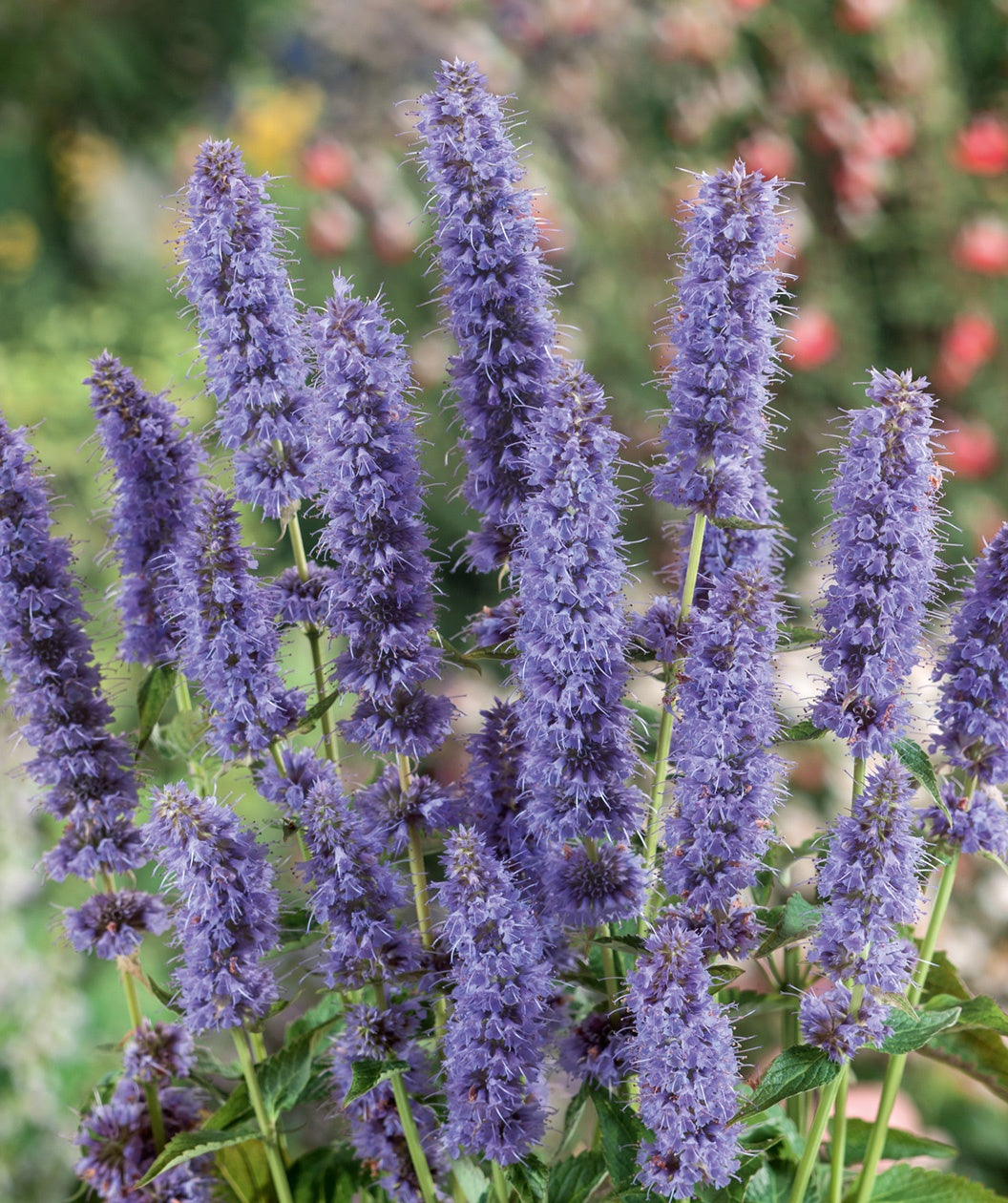

POLLINATOR BONANZA ON LAVENDER BLUE FLOWER SPIKES
FEATURES:
- In summer, tall, lavender-blue flower spikes emerge from the tips of the bright green foliage
- Long lasting blooms attract bees, hummingbirds, butterflies and more
- Flowers are edible; excellent as a garnish in a salad
- Drought tolerant when established
- Hand Selected, Fresh from the Grower
- Ships in a plant-safe designed box
Growth Facts
- Hardiness Zone: 5-9
- Mature Height: 24-30" tall
- Mature Width: 18-24" wide
- Exposure: Full Sun
- Spacing: 18-24" apart
POLLINATOR BONANZA ON LAVENDER BLUE FLOWER SPIKES
FEATURES:
- In summer, tall, lavender-blue flower spikes emerge from the tips of the bright green foliage
- Long lasting blooms attract bees, hummingbirds, butterflies and more
- Flowers are edible; excellent as a garnish in a salad
- Drought tolerant when established
- Hand Selected, Fresh from the Grower
- Ships in a plant-safe designed box
Growth Facts
- Hardiness Zone: 5-9
- Mature Height: 24-30" tall
- Mature Width: 18-24" wide
- Exposure: Full Sun
- Spacing: 18-24" apart
Why plant Blue Fortune Hyssop?
Pollinator Central! Make your garden a pollinator sanctuary with Blue Fortune Anise Hyssop. Butterflies, hummingbirds, hummingbird moths, hoverflies, and bees of all stripes will find this nectar-rich Spirit irresistible. Plant it near your outdoor living space, so you can watch them come and go, cruising and gliding, buzzing and humming, dipping and diving. And even when the pollinators aren’t enjoying it (but when are they not?), Blue Fortune is a garden-worthy Spirit. It rises like a candelabra in summer and proudly displays its lavender-blue flower spikes for weeks on end. So majestic!
Blue Fortune Anise Hyssop is a rather cosmopolitan Spirit. It comes to us from the Netherlands, where it was developed by plantsman Gert Fortgens at the famous (in horticultural circles) Arboretum Trompenburg. But the new hybrid plant’s parents didn’t come from Holland. They came from far away and from opposite sides of the globe. One parent, the Anise Hyssop, hails from the Upper Midwest in the U.S. The other parent, Korean Mint, is native not only to Korea, but also to eastern China, Japan, and Vietnam. Put them together, and you have a hybrid Spirit that’s larger flowered and longer blooming than either its mom or its dad!
How to use Blue Fortune Hyssop in the landscape?
Mmm… you might wonder why the pollinators are so crazy about Blue Fortune Anise Hyssop. Try the minty-sweet flowers for yourself in a salad—they’re edible! The leaves also add a unique twist to herbal tea. The Anise Hyssop parent contributes a distinctive anise, or black licorice, flavor to the foliage, while the Korean Mint parent’s influence is milder and sweeter.
Planting Zones
Hardiness Zone: 5-9
How To Plant Blue Fortune Hyssop
For best results, give Blue Fortune Anise Hyssop a site in full sun and soil that’s a bit on the dry side. This rugged Spirit is adaptable to a variety of soil moisture conditions, but it doesn’t like extremely wet conditions, especially in winter.
How To Water
Blue Fortune Hyssop is light on the watering needs! When first planted, be sure to water for the first year. After that, the Blue Fortune is drought tolerant and tough!
How To Fertilize
When planting, be sure to apply the Bower & Branch Elements Starter Plant Food into the soil as you plant. This will help your Hyssop as it works to become established. After that, repeat the application each spring as it breaks dormancy!
How To Prune
Trim plants once or twice before flowering to encourage bushy growth, if desired. This may delay blooming, but will make for fuller, more compact plants that are less likely to need staking. Deadhead spent blooms to keep Blue Fortune looking fresh. With Hyssops, it’s best to wait until late winter to cut the old stems back. After new growth emerges is the time for clean-up.




